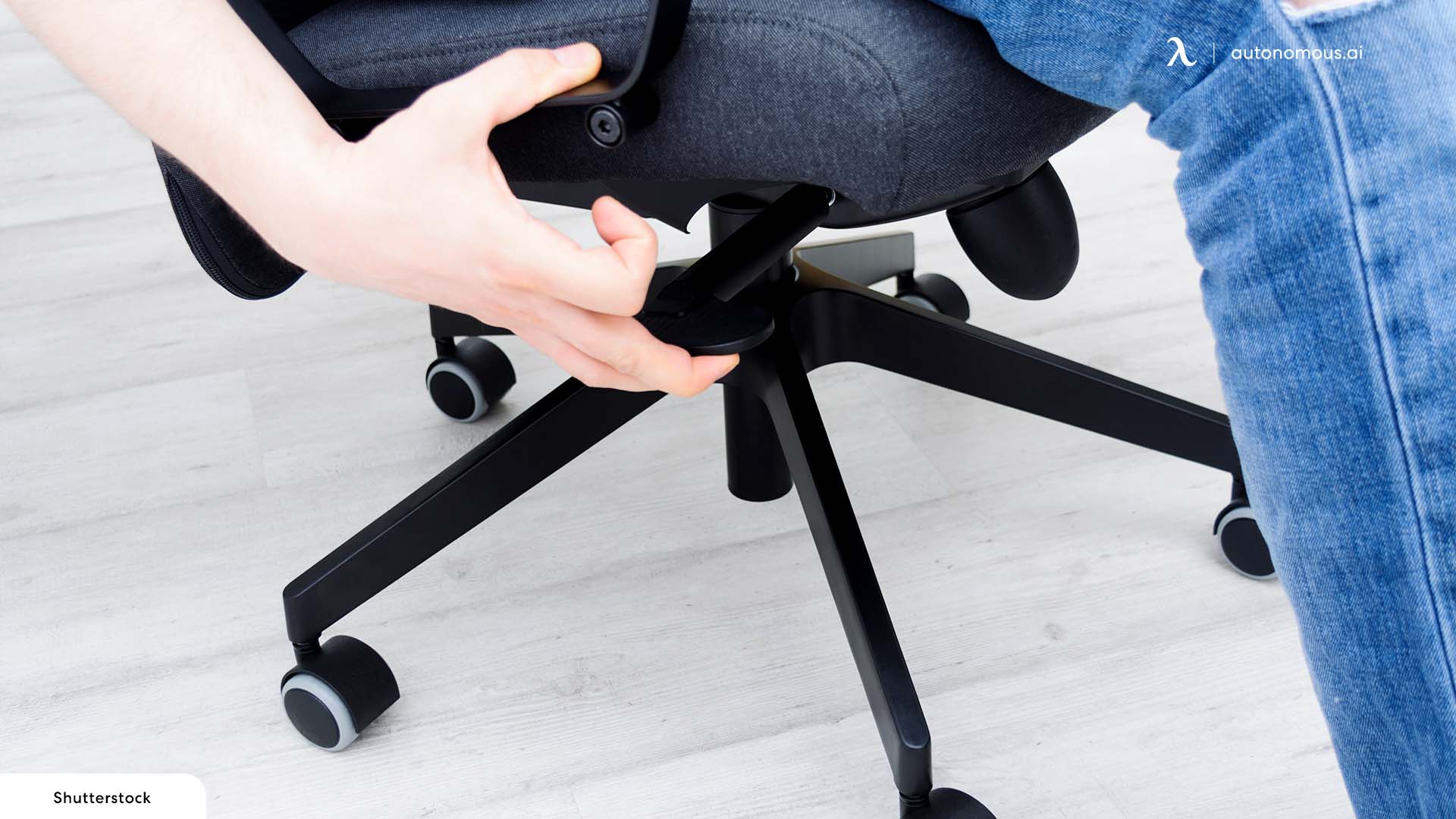Understanding the Problem: My Office Chair Leans Back Too Far

To effectively address the issue of your office chair leaning back too far, it’s crucial to understand the chair’s design, its tilt mechanism, and the potential causes behind the excessive recline.
Identifying the Chair Model and Features
The first step is to identify the specific model of your office chair. This will provide valuable insights into its design, features, and potential limitations.
- Look for a label or tag on the chair’s underside or base that indicates the manufacturer and model number.
- If you have the original purchase receipt or product manual, it will likely contain the chair’s model information.
- If you can’t find any identifying information on the chair itself, you can try searching online for images of similar office chairs and compare them to yours.
Once you’ve identified the model, you can research its features, such as the type of tilt mechanism, adjustable components, and weight capacity. This information will help you understand how the chair is designed to function and identify potential areas of concern.
Analyzing the Chair’s Tilt Mechanism, My office chair leans back too far
Office chairs typically employ a tilt mechanism that allows the user to adjust the backrest’s angle. This mechanism usually consists of a lever or knob that controls the tension of a spring or gas cylinder.
- Lever-based mechanisms: These mechanisms often involve a lever located under the seat that controls the tension of a spring. The lever can be adjusted to increase or decrease the resistance against the backrest’s tilt.
- Knob-based mechanisms: These mechanisms typically use a knob located on the backrest or seat to adjust the tension of a gas cylinder. The knob allows you to lock the backrest in a desired position or adjust the tilt resistance.
Understanding the specific tilt mechanism used in your chair will help you pinpoint potential issues related to its functionality.
Potential Causes for Excessive Recline
Several factors can contribute to an office chair leaning back too far.
- Worn-out parts: Over time, the spring or gas cylinder in the tilt mechanism can wear out, causing the backrest to recline further than intended.
- Improper adjustments: If the tilt mechanism is not properly adjusted, it can lead to excessive recline. For example, if the lever is set to low tension, the backrest may easily tilt back too far.
- Design flaws: In some cases, the chair’s design may have inherent flaws that contribute to excessive recline. This can be due to faulty engineering or manufacturing defects.
Troubleshooting and Solutions

A chair that leans back too far can be a major annoyance, especially if it’s your primary work chair. Luckily, there are a number of troubleshooting steps you can take to fix the issue, ranging from simple adjustments to more involved repairs.
Adjusting the Tilt Mechanism
The tilt mechanism is a crucial component of most office chairs, allowing you to adjust the chair’s angle for optimal comfort and support. If your chair is leaning back too far, the tilt tension might be too loose.
Here’s how to adjust the tilt tension:
- Locate the tilt tension knob. This is usually found underneath the seat, near the base of the chair.
- Turn the knob clockwise to increase the tension and make the chair lean back less.
- Turn the knob counter-clockwise to decrease the tension and make the chair lean back more.
- Test the chair’s tilt after each adjustment to find the right level of tension.
Checking for Loose Screws
Loose screws can cause the chair to become unstable and lean back too far. Check for loose screws in the following areas:
- The base of the chair
- The seat attachment points
- The backrest attachment points
If you find any loose screws, tighten them with a screwdriver.
Inspecting the Gas Lift Cylinder
The gas lift cylinder is responsible for raising and lowering the chair. If the cylinder is damaged or malfunctioning, it can cause the chair to lean back unexpectedly.
Here’s how to inspect the gas lift cylinder:
- Check for any visible damage, such as cracks or leaks.
- Try pushing down on the seat. If it feels spongy or wobbly, the cylinder might be damaged.
If you suspect the gas lift cylinder is damaged, it’s best to replace it with a new one.
Replacing the Tilt Mechanism
If the tilt mechanism is beyond repair, you’ll need to replace it. This can be a complex process, so it’s recommended to seek professional help. You can also purchase a new chair if replacing the mechanism is too costly or time-consuming.
My office chair leans back too far – My office chair is a champion of the “lean back” lifestyle, taking “reclining” to a whole new level. I swear it’s got its own agenda, a secret plot to send me into a perpetual state of horizontal relaxation. But like the phrase “put cha back in it” put cha back in it , I gotta stay upright, even if it means a few strategically placed pillows to keep me from becoming one with the carpet.
My office chair is so eager to become a chaise lounge, it practically throws itself backwards. I swear, it’s just waiting for me to doze off so it can become a full-fledged hammock. Maybe I should consider upgrading to the 9000 series quantum mid back chair – I hear it’s got a much better sense of boundaries.
Until then, I’ll just have to keep reminding my chair that I’m here to work, not nap.